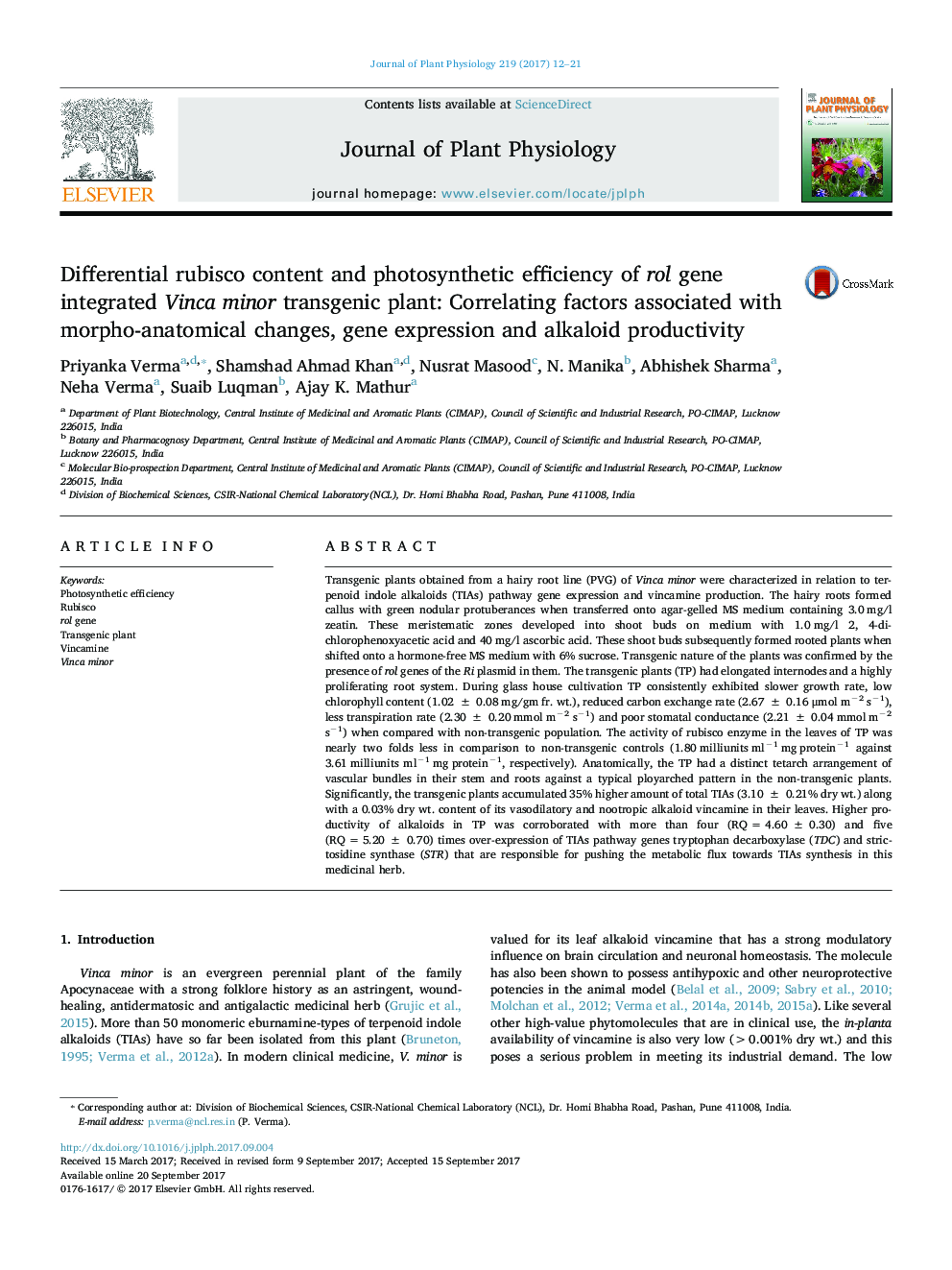| Article ID | Journal | Published Year | Pages | File Type |
|---|---|---|---|---|
| 5517946 | Journal of Plant Physiology | 2017 | 10 Pages |
Transgenic plants obtained from a hairy root line (PVG) of Vinca minor were characterized in relation to terpenoid indole alkaloids (TIAs) pathway gene expression and vincamine production. The hairy roots formed callus with green nodular protuberances when transferred onto agar-gelled MS medium containing 3.0 mg/l zeatin. These meristematic zones developed into shoot buds on medium with 1.0 mg/l 2, 4-dichlorophenoxyacetic acid and 40 mg/l ascorbic acid. These shoot buds subsequently formed rooted plants when shifted onto a hormone-free MS medium with 6% sucrose. Transgenic nature of the plants was confirmed by the presence of rol genes of the Ri plasmid in them. The transgenic plants (TP) had elongated internodes and a highly proliferating root system. During glass house cultivation TP consistently exhibited slower growth rate, low chlorophyll content (1.02 ± 0.08 mg/gm fr. wt.), reduced carbon exchange rate (2.67 ± 0.16 μmol mâ2 sâ1), less transpiration rate (2.30 ± 0.20 mmol mâ2 sâ1) and poor stomatal conductance (2.21 ± 0.04 mmol mâ2 sâ1) when compared with non-transgenic population. The activity of rubisco enzyme in the leaves of TP was nearly two folds less in comparison to non-transgenic controls (1.80 milliunits mlâ1 mg proteinâ1 against 3.61 milliunits mlâ1 mg proteinâ1, respectively). Anatomically, the TP had a distinct tetarch arrangement of vascular bundles in their stem and roots against a typical ployarched pattern in the non-transgenic plants. Significantly, the transgenic plants accumulated 35% higher amount of total TIAs (3.10 ± 0.21% dry wt.) along with a 0.03% dry wt. content of its vasodilatory and nootropic alkaloid vincamine in their leaves. Higher productivity of alkaloids in TP was corroborated with more than four (RQ = 4.60 ± 0.30) and five (RQ = 5.20 ± 0.70) times over-expression of TIAs pathway genes tryptophan decarboxylase (TDC) and strictosidine synthase (STR) that are responsible for pushing the metabolic flux towards TIAs synthesis in this medicinal herb.
